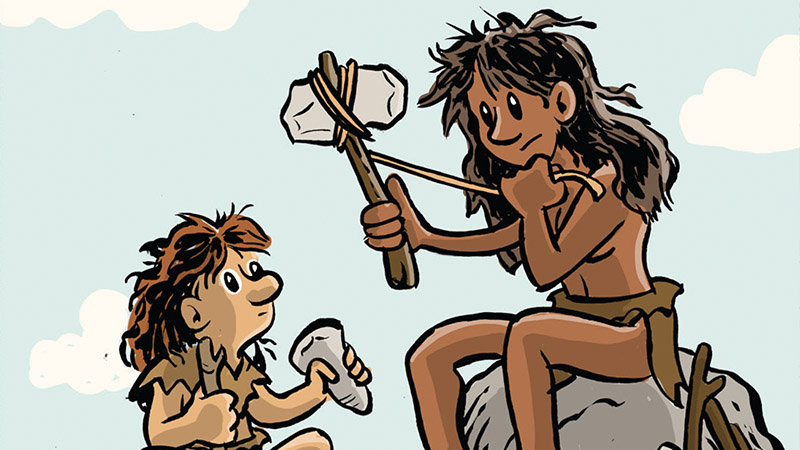Humanity’s New Complexity
Teacher Resources
Driving Question: How did human evolution lead to new complexity on Earth?
Humans communicate using complex language and pass information down across generations. But how did that happen? And why are we the only species that can do this?
Learning Objectives:
- Describe how our understanding of early humans has changed over time.
- Explain how complexity increased as humans evolved on Earth.
Vocab Terms:
- bipedalism
- collective learning
- evolution
- foraging
- hominin
- symbolic langauge
Opener: Humanity’s New Complexity
To teach this lesson step, refer to page 2 of the Lesson 4.1 Teaching Guide.
Want to know more about early humans and the Paleolithic era. Check out this blog post!
There are over 8 billion humans on Earth today. But how did our species, Homo sapiens, win the evolutionary race against other human species, such as Neanderthals?
Human Origins
To teach this lesson step, refer to page 3 of the Lesson 4.1 Teaching Guide.
Check out our Reading Guide to learn about the Three-Step Reading approach.
Looking to differentiate, modify or adapt this assignment? Check out our Differentiation Guide.
People had to start somewhere. Use this comic and activity to find out how early humans learned to use fire, communicate, and adapt to different climates.
Threshold 6
To teach this lesson step, refer to page 3 of the Lesson 4.1 Teaching Guide.
Want to get students more engaged with the idea of collective learning? Take a look at this conversation in our online community.
Who were the ancestors of humans? What parts of us changed and what stayed the same as we evolved? This video and activity have answers!
Closer: Humanity's New Complexity
To teach this lesson step, refer to page 4 of the Lesson 4.1 Teaching Guide.
Refresh your memory of why opening and closing activities are so important to include in your lessons by reviewing this guide.
Imagine there was one big book that covered the origin of human language. If you had the job of illustrating it, what would you draw on the cover?




